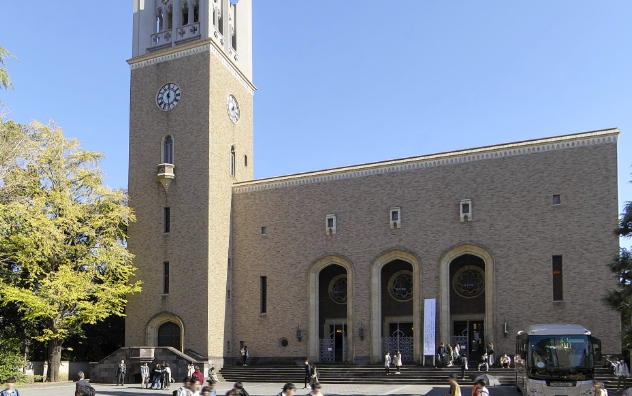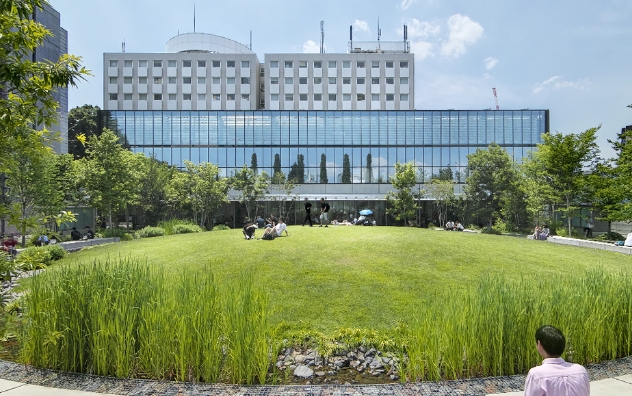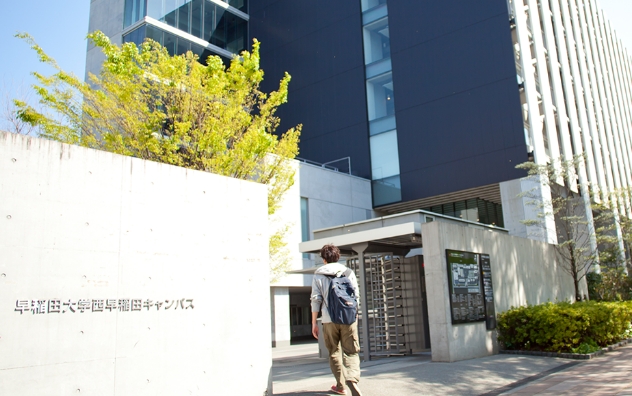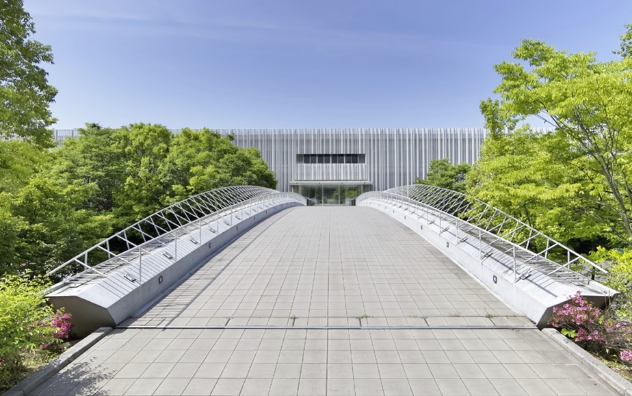On “Tokyo Boogie Woogie” and Natsume Soseki – Lectures by University of Chicago Professor Michael K. Bourdaghs
Tue, Jul 14, 2015-
Tags
Professor Michael K. Bourdaghs from the University of Chicago visited Waseda on July 9-10 to conduct a series of lectures on Japanese popular music and Natsume Soseki. A specialist in modern Japanese literature, intellectual history, and popular music, Bourdaghs was greeted by throngs of Waseda students and guests who came to attend his lectures.

1950: The Year “Tokyo Boogie Woogie” Crossed the Pacific
Bourdaghs’ first lecture on July 9 examined the relationship between Japanese popular music, the cold war, and Japanese Americans after World War II. Intertwined within these themes was the discovery of a 1950 recording of a concert by Japanese singer Hibari Misora in Sacramento, California. Bourdaghs played samples from the recordings and discussed their contents and significance.
Bourdaghs began his lecture by explaining the historical background of the 1950 recordings. Bourdaghs was sitting in his office when he received an email from a stranger. That stranger was Dieter Hollander, a collector of old recording equipment who had purchased a set of wire recordings with 1950s concerts by Japanese singers in Sacramento. Songs found on the recordings included popular songs from the 1920s and 1930s, boogie woogie’ hits, and war time propaganda songs commonly referred to as “continental melodies.” Bourdaghs recalled how surprised he was to hear “continental melodies” performed in the United States only five years after the end of World War II.

Until 2013, Bourdaghs and Hollander had no idea who made the recordings. The individual who sold the recordings to Hollander had acquired them from a flea market, making it impossible to trace the recordings back to the original owner. However, after a television special about the recordings was broadcasted in Japan, Bourdaghs was once again sitting in his office when he received an email from a stranger. The man was Arthur Kobayashi, a Japanese American who had operated the sound board for the 1950 concerts as a high school student and an acquaintance of Jimmy Akida Matsufuji, the individual who made the Hibari Misora concert recordings. Arthur Kobayashi attended the lecture and shared his memories of the concert as well as his time in the American internment camps.
Bourdaghs concluded his lecture by discussing how mimesis, or mimicry, can explain the significance of this music within the context of cold war culture. Citing anthropologist Michael Taussig’s explanations on mimesis in relation to colonialism, Bourdaghs explained how the colonizer and the colonized negotiate their identity through a process of mimicking each other. “If we look at the 1950 Sacramento recordings, we can see in them how the mimesis that was part of the Japanese Empire became the mimesis that was part of the cold war. In the process by which Yoshiko Yamaguchi became Ri Koran in the 1930s and then in the 1950s became Shirley Yamaguchi, or the process by which Hibari Misora starts out mimicking Shizuko Kasagi, Dinah Shore, and emerges as the greatest enka singer of all time….we see some of the ways the Japanese Empire was translated into the Cold War period….I think one of the things that makes popular music such a valuable object of study is that it provides us with a remarkably delicate instrument for measuring these kinds of changes and for tracing through the way in which desire and imitation go through history both as processes of discontinuity and continuity,” said Bourdaghs.

Stream of Consciousness in Natsume Soseki’s “The Gate”
Bourdaghs’ second lecture discussed “stream of consciousness” in Natsume Soseki’s novel “The Gate.” Conducted in Japanese, Bourdaghs discussed how Soseki’s exposure to psychologists such as William James and developments of Meiji Japan such as the introduction of a private-property system impacted Soseki’s narratives.
One of the major themes of Bourdaghs’ lecture was of kage, which can be translated as ‘shadow,’ ‘phantom,’ ‘light’, or ‘illusion.’ Bourdaghs encouraged attendees to think about the meaning of kage in “The Gate” and in the field of psychology. Bourdaghs offered several examples of metaphorical kage in “The Gate” including the Empire of Japan, the rise of capitalism, and the protagonist Sosuke’s past. From a psychological perspective, Bourdaghs commented that for Soseki, kage are a presence that disrupts one’s stream-of-consciousness between the past, the present, and the future.

Bourdaghs explored the relation of Soseki’s (F+f) formula found in his “Theory of Literature” to “The Gate,” kage, and psychology. Elaborating on this formula, Bourdaghs explained how F represents the cognitive and the immediate present and f a wave of emotions from the past to the future. Drawing upon sociology and psychology, Bourdaghs pointed out Soseki’s declaration that literature’s value comes from its ability to express both the cognitive, immediate present (F) and the emotional, past, and future (f). Bourdaghs referenced several scenes from “The Gate” that illustrate this stream of consciousness formulated by (F+f).















